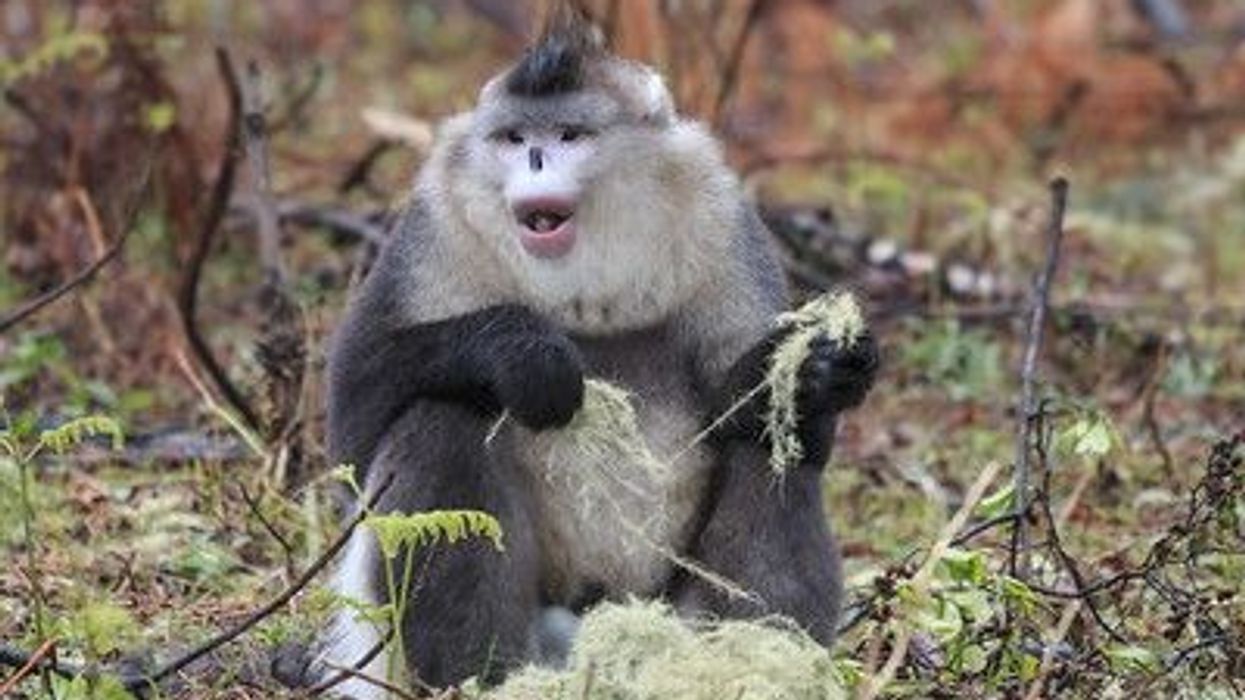One of China's many wonders, the Qinling panda is a subspecies of the Giant panda as recognized in 2005. Restricted to the Qinling Mountains of China's Shaanxi province, the unique coloring of the Qinling panda is attributed to inbreeding since its population is closed off from the rest.
This might have led to a genetic variation due to mutation in the offspring. In 1989, a female Qinling panda called Dan-Dan was captured and kept in the Xi'an Zoo where it mated with a black and white panda.
She delivered babies who were initially black and white, but their fur started to turn brown with age. Qinling pandas are terrestrial animals that roam around and feed in forests.
Keep reading for more amazing facts about the Qinling panda! Also, check out other articles with interesting facts about red pandas and giant panda bears.
Qinling Panda Interesting Facts
What type of animal is a Qinling panda?
A Qinling panda (Ailuropoda melanoleuca qinlingensis) is a subspecies of the Giant panda.
What class of animal does a Qinling panda belong to?
The Qinling panda (Ailuropoda melanoleuca qinlingensis) belongs to the Mammalia class of animals.
How many Qinling pandas are there in the world?
According to scientists in 2005, there were around 1,800 Qinling pandas in the world. Currently, there are 200 to 300 Qinling pandas in the world.
Where does a Qinling panda live?
The Qinling panda is found only in the Qinling Mountains, a major mountain range in China's Shaanxi province.
What is a Qinling panda's habitat?
Qinling pandas prefer a terrestrial habitat in a semi-arid climate which can be found in the Qinling Mountains in the Shaanxi province.
Who do Qinling pandas live with?
Like Giant pandas, its subspecies of brown Qinling pandas are also quite solitary. Adult brown pandas have their territories in the mountains, and females do not like the presence of another female brown panda within their range in the wild.
How long does a Qinling panda live?
A brown Qinling panda (Ailuropoda melanoleuca qinlingensis) is estimated to have an average lifespan of 15 to 20 years in the wild.
How do they reproduce?
Brown pandas are a subspecies of the Giant panda and they share many features. They reach sexual maturity between the ages of four and eight, and their mating season is between March and May.
The female brown panda delivers the offspring in August, and the gestation period lasts for 95 to 160 days. Pandas mostly give birth to twins, but only one of them normally survives in the wild. The mother brown panda selects the stronger cub and produces enough milk for one cub.
A month after birth, the cub fully develops its fur's black and white color pattern. Mothers play with their cubs by rolling with them and they even wrestle playfully. Although cubs can eat small quantities of bamboo after six months, they still feed on their mother's milk.
What is their conservation status?
The International Union for Conservation of Nature (IUCN) has put the Giant panda (Ailuropoda melanoleuca) in their Red List under the Vulnerable category. Although IUCN has not mentioned Qinling pandas in any of their lists specifically, it is assumed that they are also vulnerable as they are a subspecies of the Giant panda.
Qinling Panda Fun Facts
What does a Qinling panda look like?
The Qinling panda is a unique subspecies of the Giant panda but there are quite a few physical dissimilarities between both. Although they share the same body structure and shape, the Qinling panda is smaller in size and their skull is smaller too.
Its fur is dark brown and light brown rather than the black and white fur of Giant pandas. The brown eyespots of Qinling pandas are also below their eyes rather than all around, like in black and white pandas.

*Please note that this is an image of a Giant panda, one of the subspecies of the Qinling panda. If you have an image of a Qinling panda please let us know at hello@kidadl.com
How cute are they?
Qinling pandas are extremely cute! Black and white Giant pandas are already considered to be very cute due to their hilarious actions and huge, furry body. Qinling pandas are a novelty with their dark brown fur.
How do they communicate?
Brown Qinling pandas communicate through sound and vocalization along with clawing on trees or spraying urine to mark territories. However, they are restricted within a close range in the Qinling Mountains of the Shaanxi province.
How big is a Qinling panda?
The exact measurements of a brown Qinling panda are not known, but they are relatively smaller in terms of the size of the body and skull than a Giant panda. A Giant panda can grow up to 4-6 ft (1.2-1.8 m) in length, and its height usually lies between 2-3 ft (60-90 cm).
A whale shark is almost 10 times the size of a panda because it is approximately 40 ft (12 m) in size.
How fast can a Qinling panda run?
Brown Qinling pandas cannot run very fast since they are a subspecies of Giant pandas who are slow, docile creatures and remain quite inactive throughout the day.
How much does a Qinling panda weigh?
A male Giant panda is heavier than a female Giant panda, but its weight usually lies between the range of 150-250 lb (70-113 kg).
What are the male and female names of the species?
There are no separate names to denote a male and female type of brown Qinling panda (Ailuropoda melanoleuca qinlingensis). Usually, a male Giant panda is referred to as a boar, while a female Giant panda is referred to as a sower.
What would you call a baby Qinling panda?
A baby Qinling panda is called a cub.
What do they eat?
Although the brown panda is classified as carnivorous, its diet is primarily herbivorous and they eat bamboo exclusively.
Are they dangerous?
Pandas are not considered dangerous animals and are not known to be harmful or kill human beings. However, some pandas may attack humans out of irritation rather than aggression. It is advised you do not approach a panda in the wild as its bite is powerful enough to cause serious harm.
Would they make a good pet?
Qinling panda bears, a subspecies of Giant panda found in China, would not make a good pet because they are essentially wild, unpredictable animals.
Did you know...
China's pandas are extremely interesting animals, for example, Giant panda bears can climb trees and swim!
Fossils of pandas have been found in China that date back to one to two million years ago.
Panda bears have a sixth digit on the heels of their forepaws that helps them to grasp bamboo better while they eat.
An adult panda can eat 26-84 lb (12-38 kg) of bamboo in a day. Some researchers have also noted that pandas like to lick copper and iron objects.
Pandas constantly eat bamboo for around 12 to 14 hours a day.
Are Qinling pandas endangered?
Qinling pandas, a subspecies of Giant pandas found in China, are extremely rare and have a very low population. Since Qinling pandas rarely step out of their natural range, they are exposed to toxic materials in their diet.
The toxicity is assumed to be caused by the atmospheric deposition of heavy metals. Therefore, the conservation of this panda species is negatively impacted due to rising air pollution in China.
Qinling pandas also suffer from dental problems such as fractures and dental attrition. Therefore, pandas are most likely to die of diseases like toxoplasmosis, destruction of their habitat, predators, or old age.
Why are pandas so docile?
Pandas have a gut and teeth ideal for digesting meat, but they primarily survive on bamboo which gives them very little protein. New research has shown that they can survive on bamboo alone due to an extremely slow metabolic rate. This explains why they derive little energy from the consumption of bamboo and remain inactive and docile.
Here at Kidadl, we have carefully created lots of interesting family-friendly animal facts for everyone to discover! Learn more about some other mammals including Caribou or Pomsky.
You can even occupy yourself at home by drawing one on our Qinling panda coloring pages.










